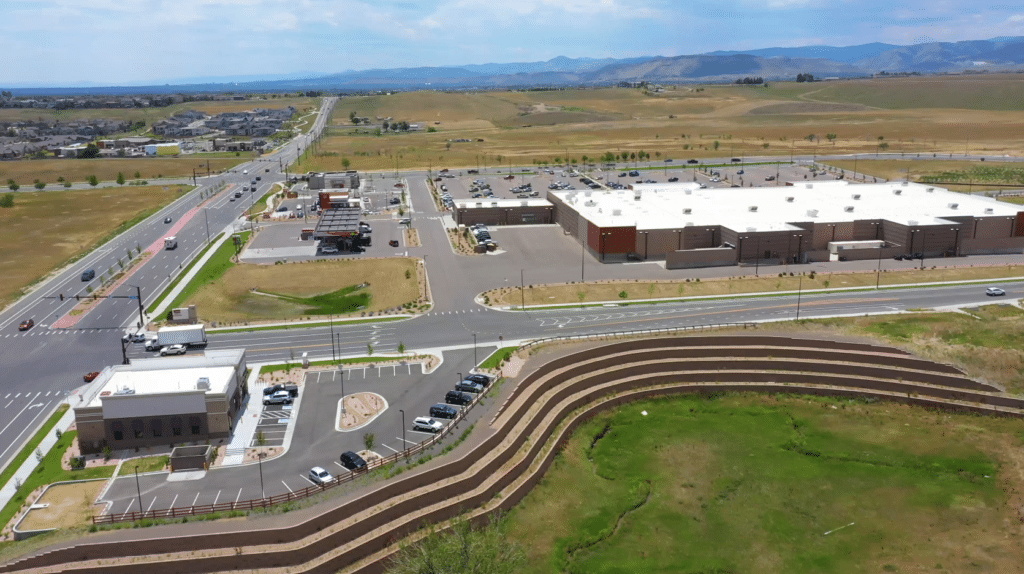Three Keys to a Successful Civil Engineering Project
Civil engineering projects are characterized by their great complexity when it comes to implementation, but complex doesn’t have to be complicated with proper planning and oversight by the design team. Whether in the beginning stages of the project, currently working through the design, or in the construction phase, experience and insight can make projects succeed every step of the way.
Though every project is unique, incorporating the following ideas into projects will help save time, money, and possible rework down the road.
Key #1 – Secure A Strong Start by Defining Project Objectives
Holding a project kick-off meeting with clients is a key step in making sure that a civil design project begins on a positive trajectory. By setting expectations early, roles and responsibilities, timelines, budget and the scope of work are clearly defined, and the specialized knowledge of all project stakeholders can be leveraged.

Project Kick-Off With the Client
Success looks different to every person, project, and community. The first step of a project should always be to define what success will entail, so the first priority is to listen. What does the client want to achieve? By actively listening and engaging, teams can determine what success for the project means rather than running on assumptions. While many factors contribute to overall project success, it is necessary to understand which factors are most important to the client’s view of success:
- Cost
- Schedule
- Quality
- Community Impact
It is important to understand how to make clients and their projects successful. Developing succinct success criteria standards can be used throughout the project to determine if the project performed to expectations. These standards are looked at during the project lifecycle and after project closeout, so that the focus never deviates from what was defined at the onset of the project.
Internal Team Project Kick-offs
Internal team kick-offs ensure that all team members fully understand the scope of work, budget, key milestones and schedule of the civil project. These meetings help to bring all pieces together to create an aligned schedule that ensures milestones are met while incorporating expected external parameters such as permit timeframes, planning, funding and construction. After defining the project goals and objectives and successfully holding a kick-off meeting, it is beneficial to closely analyze all potential issues, opportunities and related information to determine recommendations and priorities as the project moves through design.
Key #2 – Progressing a Project Takes Due Diligence, Communication and Creativity
Consistent Communication
Effective communication by the engineering team is essential during project development so that clients are always aware of how deliverables, designs, or other aspects are progressing. Holding regular and frequent meetings makes important dialog and decision-making easy. Projects run smoothly when the project team is in sync with what steps come next and have their questions answered promptly.
Additionally, strategic relationships with local, state, and federal agencies are critical to any successful civil engineering project. Often, owners/developers turn to team members with a strong local presence who understand the local conditions and requirements in order to effectively move a project along.
A key time saver and best practice is working with regulatory authorities to receive initial input before formal submittals through informal reviews, clarifications, and summaries of upcoming deliverables. This is highly beneficial, as the regulatory authority may identify potential issues or anticipated requirements that the project will need to address. By complying with these requirements and understanding the regulatory authorities’ feedback early, the project may be able to avoid costly schedule delays and potential rework on deliverables.
Digging into the Details
Early completion of due diligence is essential to the design process. Starting with a full understanding of the site constraints, challenges, and opportunities saves time by reducing the chances of needing to complete costly rework. Working with a team that has a strong history of providing development services can play an important role in the due diligence process by coordinating with the numerous stakeholders, leveraging existing relationships, and drawing on past experience and lessons learned. The goal is to turn over all the “rocks” in order to prevent and unearth potential obstacles before they put a dent in the budget.
Ditching the “One Size Fits All” Approach

By jumping outside the “sandbox,” teams can easily develop solutions for any project need. Civil engineers should look at the design process from the client’s perspective and utilize their success criteria to apply unconventional solutions as needed. Ensuring that a team is focused on the client aspirations and delivering a customized, quality design is key to success, especially when multiple disciplines are involved. Putting the “client’s hat” on when approaching a project allows civil engineers to meet expectations by seeing the project through a holistic perspective.
For example, when a large retail client was facing the challenge of needing a sizeable detention system under their parking lot, one civil engineering team took a hands-on approach to make sure they provided a solution that would be not only compliant, but would also save the project money. After reviewing other drainage reports used for adjacent developments, the civil engineers felt that the city’s assumptions on the permeability of the soils in the project area were overconservative. After communicating this to the client, geotechnical testing at the project site was approved and performed, which confirmed that the permeability of the soil indeed was greater than the city’s more conservative assumptions on permeability. Consequently, the civil engineering team was able to convince the city to use more realistic and site-specific soil permeabilities, thereby allowing for a smaller detention system to be installed. This solution saved the client over $80,000 dollars.
Key #3 – Construction and Close-Out: Contractor Coordination and Punch Walks Assure Success
Though the design process may be done when construction begins, the project is not successful until construction is complete. Maintaining a collaborative, responsive relationship with contractors as construction progresses is an important component of every project. Responsiveness prevents potential delays from unanswered contractor requests, which ultimately saves time and keeps the schedule on track.
Additionally, civil design teams should view the contractor as a valuable partner in achieving success on the project. It is important to understand that the contractor is the in-the-field expert and may possibly see a solution that civil engineers, as the designer, did not see. The goal is to collaboratively work with the contractor to find the best solution, while still delivering on the client’s needs.
Finally, encourage clients to schedule site punch walks not only at the end of construction, but during the construction process as well. Punch walks are helpful tools for ensuring all design aspects are being completed correctly. Conducting multiple site punch walks will help ensure that the final construction accurately reflects what was designed and paid for by the client.
Learn More About Our Civil Engineering Team
No matter the phase, experience and insight can make projects succeed every step of the way. Our civil design team has the knowledge to apply these keys to success for on-schedule and on-budget projects.
Click Here